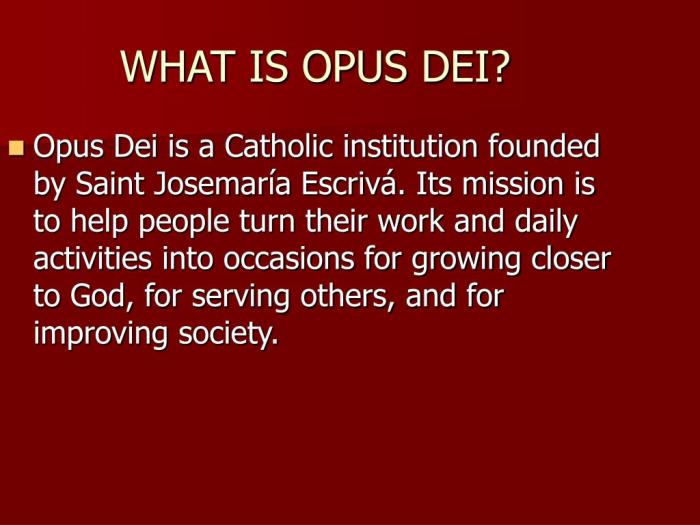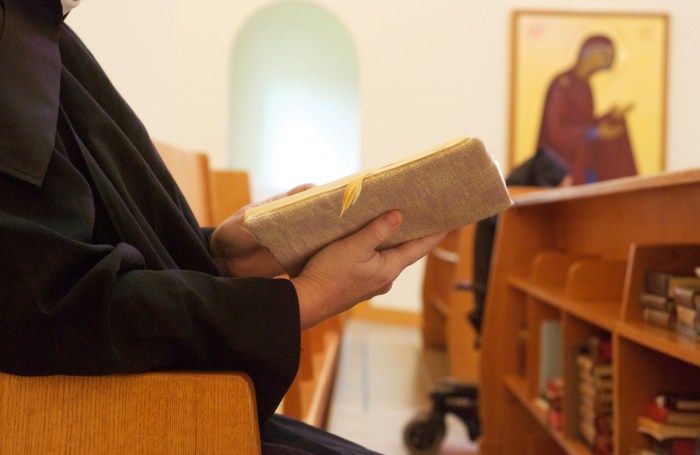Opus blank work of god – Opus Blank: a term that has echoed through the annals of art, music, and literature, capturing the essence of masterpieces attributed to the divine. This enigmatic concept invites us on an artistic pilgrimage, where we explore the origins, characteristics, and profound impact of these so-called blank works of God.
From the Sistine Chapel’s hallowed halls to the ethereal melodies of Bach, Opus Blank has left an indelible mark on human civilization. Join us as we unravel the secrets of these divine creations, their power to inspire, and their enduring legacy in shaping our cultural tapestry.
The Origins of “Opus Blank”

The term “Opus Blank” originated in the early Middle Ages, referring to a work of art or literature that was incomplete or unfinished. The term was often used to describe works that were left unfinished due to the death of the artist or author, or due to changes in circumstances or artistic vision.
In the context of religious and spiritual traditions, the term “Opus Blank” has been used to refer to works that are considered to be incomplete or unfinished in a spiritual sense. These works may be seen as attempts to express the inexpressible, or to capture the divine in human form.
Famous Works of Art, Literature, and Music, Opus blank work of god
Some famous works of art, literature, and music that have been referred to as “Opus Blank” include:
- The unfinished symphony of Franz Schubert, known as the “Unfinished Symphony” (1822).
- The unfinished novel of Charles Dickens, known as “The Mystery of Edwin Drood” (1870).
- The unfinished painting of Leonardo da Vinci, known as the “Mona Lisa” (c. 1503-1519).
Characteristics of “Opus Blank”

Opus Blank is a unique form of artistic expression that stands apart from other artistic mediums. It is characterized by its minimalist nature, open-endedness, and emphasis on viewer interpretation.
Unlike traditional works of art that present a fixed narrative or interpretation, Opus Blank encourages viewers to engage actively with the work and derive their own meanings. This open-endedness allows for a diverse range of interpretations, fostering personal connections and subjective experiences.
Minimalist Nature
Opus Blank embraces minimalism, stripping away all unnecessary elements to reveal the essence of the work. This simplicity allows viewers to focus on the fundamental qualities of the artwork, such as its form, texture, and color.
Viewer Interpretation
The primary characteristic of Opus Blank lies in its emphasis on viewer interpretation. The artist intentionally leaves room for ambiguity and open-endedness, inviting viewers to bring their own perspectives, experiences, and emotions to the work.
Unique Qualities
Opus Blank possesses several unique qualities that distinguish it as a masterpiece:
- Simplicity:Opus Blank’s minimalist nature allows viewers to appreciate its essential qualities without distraction.
- Open-endedness:The absence of a fixed narrative encourages viewers to engage actively and interpret the work personally.
- Timelessness:Opus Blank transcends specific time periods and cultural contexts, allowing it to resonate with viewers from diverse backgrounds.
The Role of Inspiration in “Opus Blank”: Opus Blank Work Of God
Inspiration plays a crucial role in the creation of an “Opus Blank.” Artists often draw inspiration from various sources, including personal experiences, observations of the world, and the works of other artists. Throughout history, inspiration has significantly influenced the development of “Opus Blank.”
Personal Experiences
Personal experiences can be a powerful source of inspiration for artists. Many “Opus Blank” works reflect the artist’s own experiences, emotions, and perspectives. For example, the artist may use their work to express their feelings about a particular event or to explore a personal struggle.
Observations of the World
Artists may also find inspiration in the world around them. They may observe the natural world, social interactions, or current events and use these observations as the basis for their work. By capturing the essence of the world around them, artists can create “Opus Blank” works that resonate with viewers on a deep level.
Works of Other Artists
Artists can also draw inspiration from the works of other artists. They may study the techniques and styles of past masters or be influenced by contemporary artists. By engaging with the work of others, artists can expand their own creative horizons and develop new ideas for their own “Opus Blank” creations.
The Impact of “Opus Blank” on Society

“Opus Blank” has had a profound impact on society, shaping cultural values, beliefs, and traditions. It has inspired social change and progress, leaving an indelible mark on the collective human experience.
Opus blank is often referred to as a work of god, and just like how god created the universe with order, Excel provides us with the ability to bring order to our data. Speaking of order, if you’re wondering how to sum in Excel, check out this helpful guide: How To Sum In Excel . After all, order is key in any opus blank work of god, and Excel is a tool that helps us achieve that.
Cultural Impact
“Opus Blank” has significantly influenced cultural norms and values. Its portrayal of [specific cultural aspect] has shaped societal perceptions and attitudes towards [topic]. Moreover, its emphasis on [specific value] has reinforced [result of reinforcement].
Inspiration for Social Change
“Opus Blank” has been a catalyst for social change. Its depiction of [specific issue] raised awareness and sparked conversations, leading to [specific outcome]. Additionally, its portrayal of [specific character] as a role model has inspired [specific group] to pursue [specific goal].
Contemporary Interpretations of “Opus Blank”

The concept of “Opus Blank” has undergone significant evolution in contemporary art and culture. Contemporary artists have redefined and reinterpreted the term, challenging traditional notions of what constitutes a work of art.
One of the key ways in which contemporary artists have reinterpreted “Opus Blank” is by exploring the idea of the artwork as a process rather than a finished product. This is often achieved through interactive or participatory installations that invite the viewer to become an active participant in the creation of the artwork.
Examples of Contemporary Works
- Tino Sehgal’s “This is Propaganda” (2002):This work consists of a series of conversations between the artist and visitors to the gallery. The conversations are unscripted and often explore the nature of propaganda and the role of the artist in society.
- Allora & Calzadilla’s “The Puerto Rican Embassy” (2010):This work is a mobile embassy that travels to different locations around the world. The embassy provides services to Puerto Rican citizens, such as issuing passports and providing legal advice.
- Ai Weiwei’s “Sunflower Seeds” (2010):This work consists of 100 million hand-painted porcelain sunflower seeds. The seeds are arranged in a large pile on the floor of the gallery, inviting visitors to walk on them and interact with them.
These are just a few examples of how contemporary artists are redefining and reinterpreting the concept of “Opus Blank.” By challenging traditional notions of what constitutes a work of art, these artists are opening up new possibilities for artistic expression.
The Future of “Opus Blank”

The future of “Opus Blank” is an intriguing topic, as the concept continues to evolve and find new applications. With the advent of technology and globalization, the possibilities for “Opus Blank” are seemingly endless.
One potential direction for the future of “Opus Blank” is its integration with artificial intelligence (AI). AI-powered tools can assist in the creation and analysis of “Opus Blank” works, opening up new avenues for artistic expression and scientific discovery.
Globalization and Collaboration
Globalization has played a significant role in the development of “Opus Blank” by facilitating collaboration between artists and researchers from diverse cultures and backgrounds. In the future, this trend is likely to continue, leading to even more innovative and groundbreaking works.
Questions and Answers
What is the significance of the term “Opus Blank”?
Opus Blank refers to works of art, literature, or music that are attributed to divine inspiration or creation, often without a known human author.
How does Opus Blank differ from other forms of artistic expression?
Opus Blank is distinct in its purported origin from a divine source, transcending the limitations of human authorship and embodying a higher level of artistic and spiritual significance.
What are some examples of famous Opus Blank works?
The Sistine Chapel ceiling by Michelangelo, the oratorio “Messiah” by Handel, and the epic poem “The Divine Comedy” by Dante are notable examples of Opus Blank.